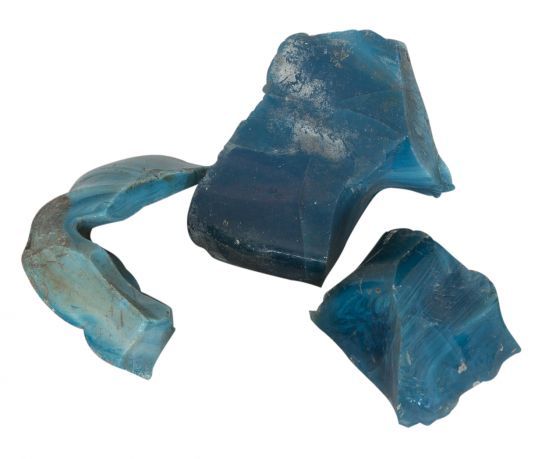We use cookies to make your experience better.
Bergslagsten ("Swedish blue") is melting product / "slag" in iron production, Sweden
- Buy 2000 for €0.12 each and save 20%
The rocks are called the slag, which is a residual product of iron production in the 18th and 19th centuries. The rock slag is formed when the furnace has a sufficiently high temperature to glaze the ore. In older slag, occasional traces of vitrification are sometimes seen, and even in modern slag, less incompletely vitrified portions often occur. The rock layer is the slag that is formed during metal melting. The slag floats on top of the melt and is discharged from the blast furnace before the metal. The slag is available in all kinds of colors and structures. What distinguishes Bergslagssten is just the color and texture. The color can change from light blue over clear blue and dark blue via green to black. The appearance depends, among other things, on what it contains for minerals. The structure is glassy and brittle. From the slag, slag tile was cast, where the liquid slag was led directly from the furnace into sand molds, see slag housing. In more modern times, lime tile was made of slag grains and lime. Man graveled roads, isolated house grounds and made pile of cotton-like threads that were used for insulation materials. But one had to stop this since it turned out that the workers got the lungs destroyed by the fine slag glass needles. Of basic blast furnace slag and burnt lime, cement was made and bottle glass was also manufactured. Around the house of Bergslagen Murade of the slag stone and many buildings remain today, for example, the ruin of the "Slaggstensslottet" from 1884 at Norhyttan in southern Dalarna. Today no house is bricked longer with the slag stone, but the colored stone, especially the blue one, is preferably used as a starting material for jewelry. Grinded and polished and cut in precious metal, Bergslagsstenen becomes a popular souvenir from Bergslagen.












